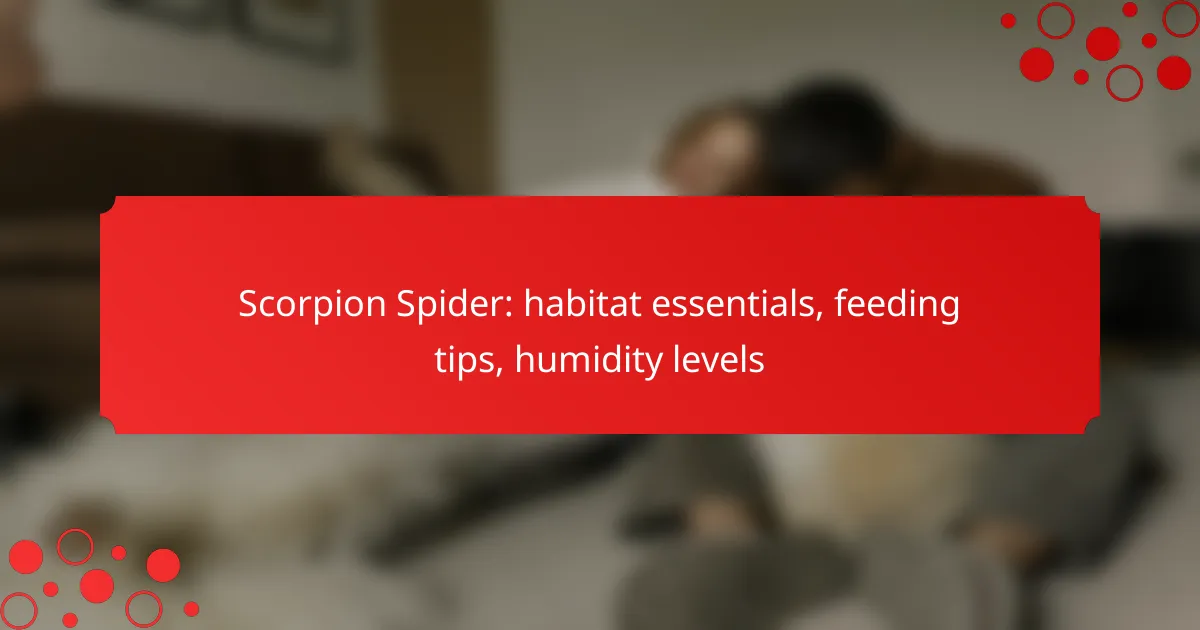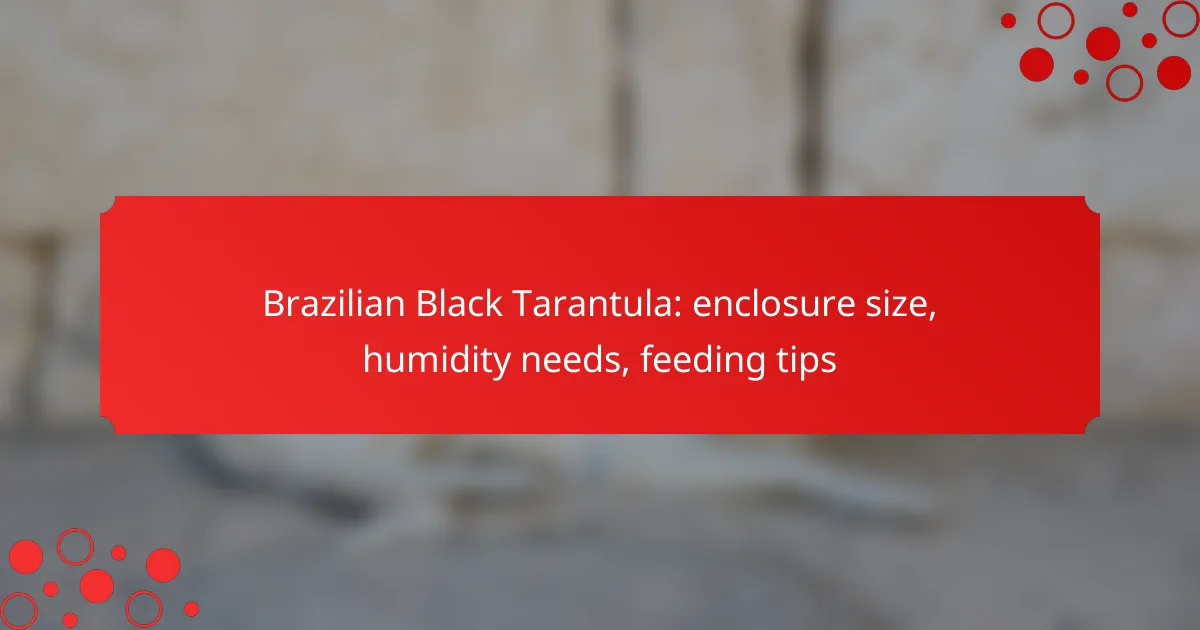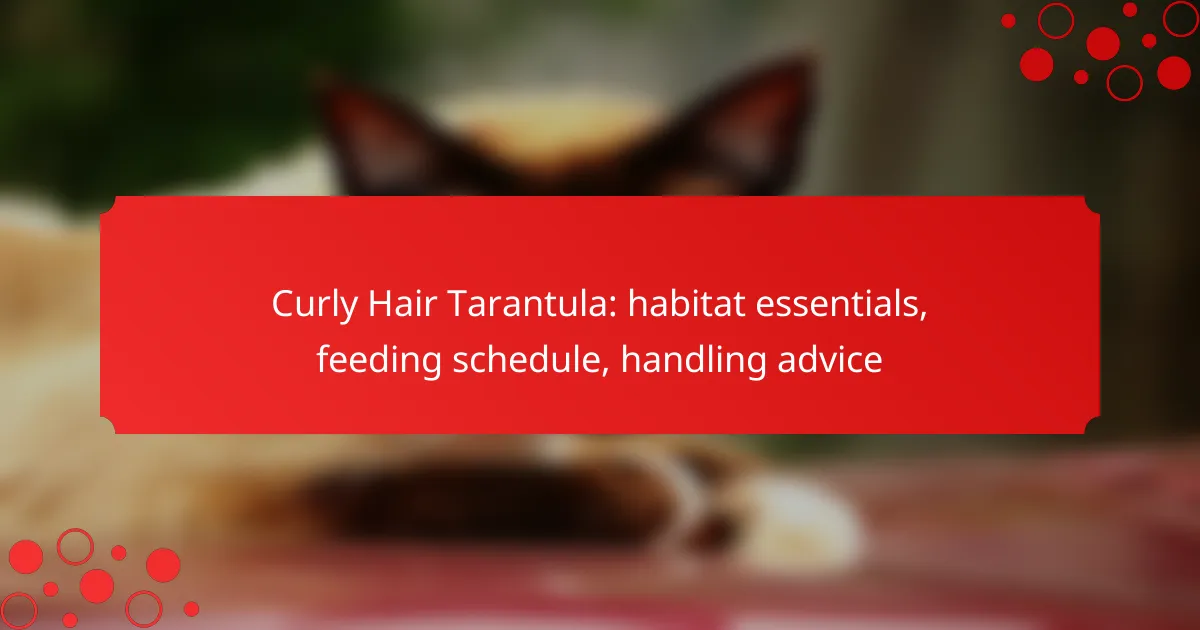Scorpion spiders require a habitat that features dry, sandy areas with sufficient cover and warmth to thrive. They primarily feed on insects using a mix of predatory techniques and silk traps, which are adapted to their environment. Maintaining humidity levels between 30% and 50% is essential for their health, as too much moisture can cause respiratory problems and mold growth.
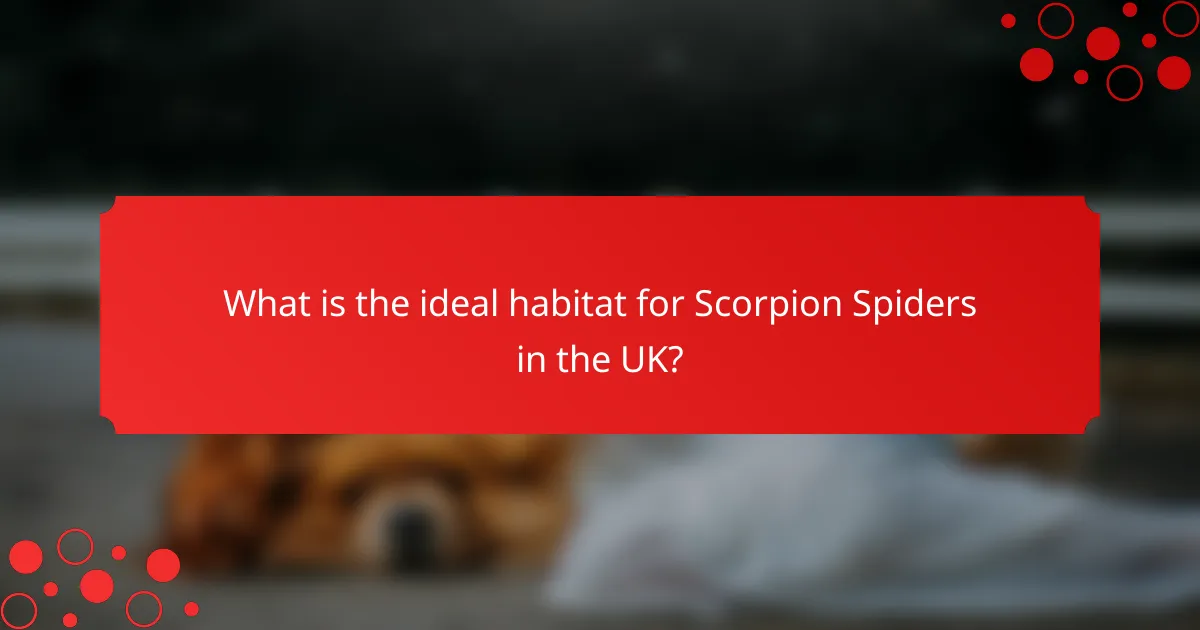
What is the ideal habitat for Scorpion Spiders in the UK?
The ideal habitat for Scorpion Spiders in the UK consists of dry, sandy areas with ample cover and warmth. These spiders thrive in environments that provide both shelter and hunting grounds, allowing them to maintain their moisture levels and hunt effectively.
Dry, sandy environments
Scorpion Spiders prefer dry, sandy environments where they can easily camouflage and hunt for prey. These habitats typically include sandy heathlands, coastal dunes, and areas with sparse vegetation. The loose substrate allows them to burrow, which aids in moisture retention and temperature regulation.
When selecting a location, look for patches of bare sand interspersed with low-growing plants. This combination provides both hunting opportunities and protection from predators.
Rocky crevices and leaf litter
Rocky crevices and leaf litter are essential for Scorpion Spiders as they offer shelter and hunting grounds. These areas provide a moist microhabitat that helps prevent desiccation while also concealing the spiders from potential threats. Leaf litter can also attract various insects, which serve as food sources.
To create a suitable environment, consider maintaining a garden with natural debris and rocks. This can enhance biodiversity and create a welcoming habitat for Scorpion Spiders.
Warm microclimates
Warm microclimates are crucial for Scorpion Spiders, as they require specific temperature ranges to thrive. These microclimates can be found in sunlit areas, such as south-facing slopes or spots sheltered from wind. Maintaining warmth helps these spiders remain active and aids in their reproductive cycles.
To foster warm microclimates, consider planting heat-retaining materials like stones or using mulch in your garden. This can create pockets of warmth that benefit Scorpion Spiders and other beneficial insects.

How do Scorpion Spiders feed in their natural habitat?
Scorpion spiders primarily feed on insects by employing a combination of predatory techniques and silk traps. Their feeding strategies are adapted to their environment, allowing them to capture prey effectively while minimizing energy expenditure.
Predatory behavior on insects
Scorpion spiders exhibit aggressive predatory behavior, often ambushing their prey. They typically hunt insects such as flies, beetles, and other small arthropods, using their keen eyesight to detect movement.
Once a potential meal is spotted, they can quickly pounce, using their strong chelicerae to grasp and immobilize the insect. This method allows them to consume their prey efficiently, often within minutes of capture.
Use of silk for trapping
In addition to active hunting, scorpion spiders utilize silk to create traps for unsuspecting insects. They spin fine silk threads in strategic locations, which can ensnare prey that comes into contact with them.
This technique is particularly effective in dense vegetation where insects are abundant. The silk traps not only increase their chances of a successful meal but also reduce the energy spent on active hunting.
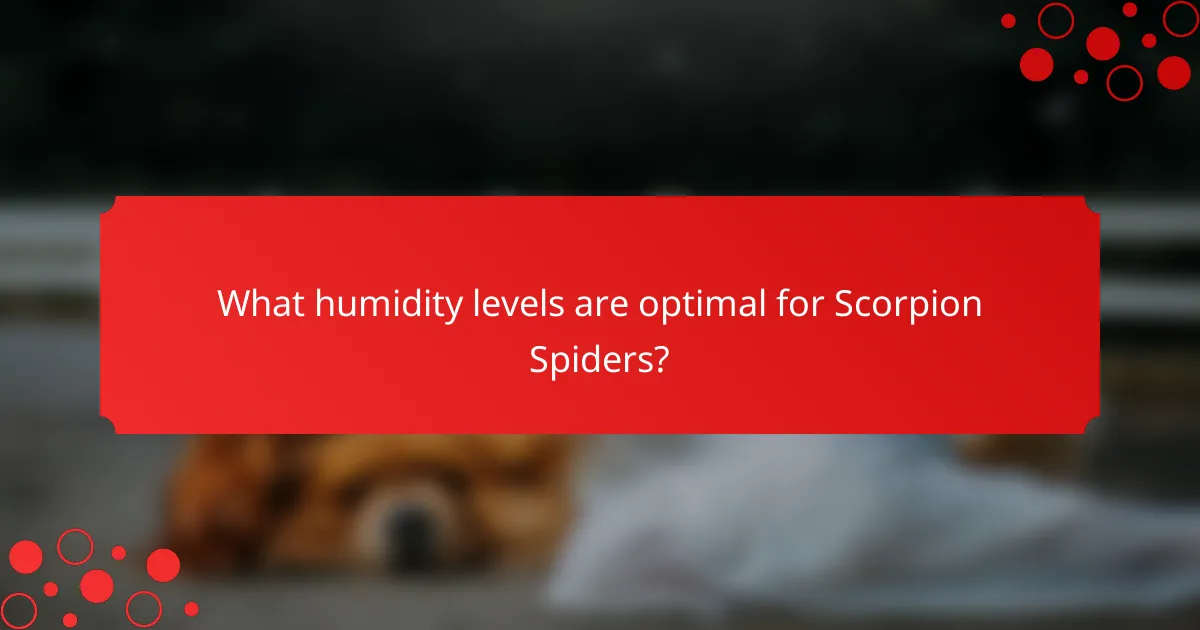
What humidity levels are optimal for Scorpion Spiders?
Scorpion spiders thrive in low to moderate humidity levels, typically between 30% and 50%. Maintaining this range is crucial for their health, as excessive moisture can lead to mold growth and respiratory issues.
Low to moderate humidity
Low to moderate humidity is essential for the well-being of scorpion spiders. Humidity levels below 30% can lead to dehydration, while levels above 50% can create an environment conducive to fungal infections. It’s important to monitor humidity closely to keep your spider healthy.
To achieve the right humidity, consider using a hygrometer to measure moisture levels in the habitat. Adjustments can be made by misting the enclosure lightly or using a dehumidifier if necessary.
Humidity range of 30-50%
The ideal humidity range for scorpion spiders is between 30% and 50%. This range mimics their natural habitat, allowing them to thrive and exhibit normal behaviors. Regularly checking humidity levels helps ensure that they remain within this optimal range.
To maintain this humidity level, you can use a combination of substrate moisture and ventilation. A slightly damp substrate can help retain moisture, while proper ventilation prevents excessive humidity buildup. Aim for a balance that keeps the environment comfortable for your spider.
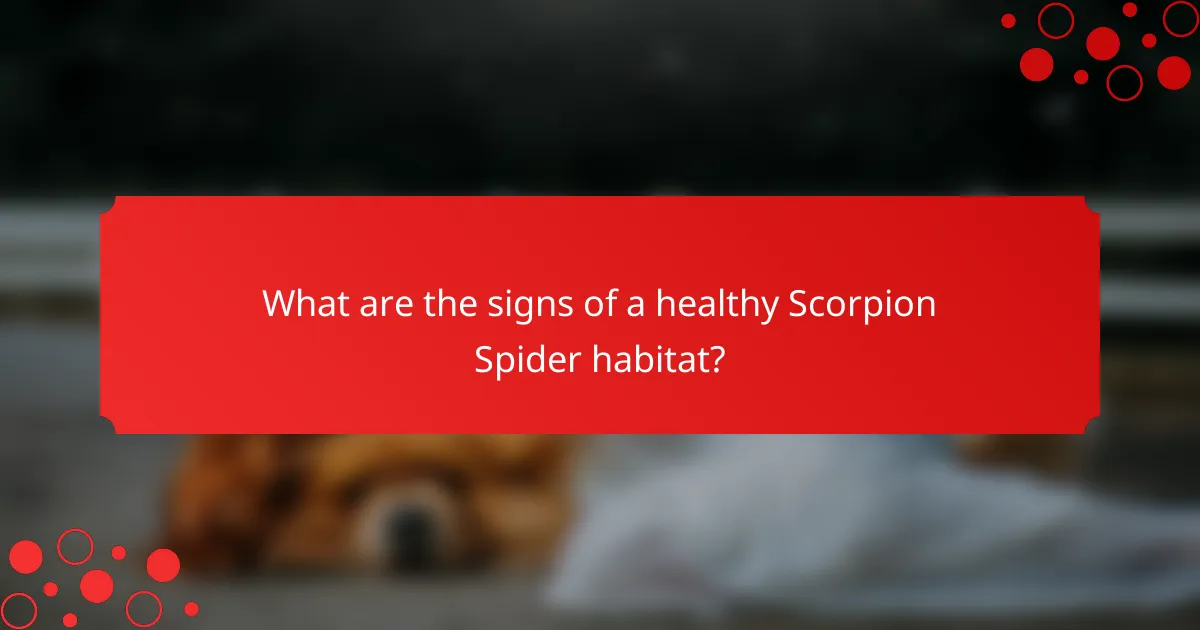
What are the signs of a healthy Scorpion Spider habitat?
A healthy Scorpion Spider habitat is characterized by the presence of adequate prey insects and stable temperature conditions. These factors are crucial for the spider’s survival and overall well-being.
Presence of prey insects
Scorpion Spiders thrive in environments where prey insects are abundant. Common prey includes various types of flies, beetles, and other small arthropods. Ensuring a steady supply of these insects is essential for the spider’s feeding and growth.
To maintain a healthy habitat, consider introducing live food sources or allowing natural populations of insects to flourish. Avoid using pesticides, as these can diminish prey availability and harm the spider.
Stable temperature conditions
Stable temperature conditions are vital for Scorpion Spiders, which typically prefer warm environments. Ideal temperatures generally range from 20°C to 30°C (68°F to 86°F). Fluctuations outside this range can stress the spider and affect its feeding and reproductive behaviors.
To create a suitable habitat, monitor temperature levels regularly and use heating mats or lamps if necessary. Avoid placing the habitat in direct sunlight or drafty areas to maintain consistent warmth.
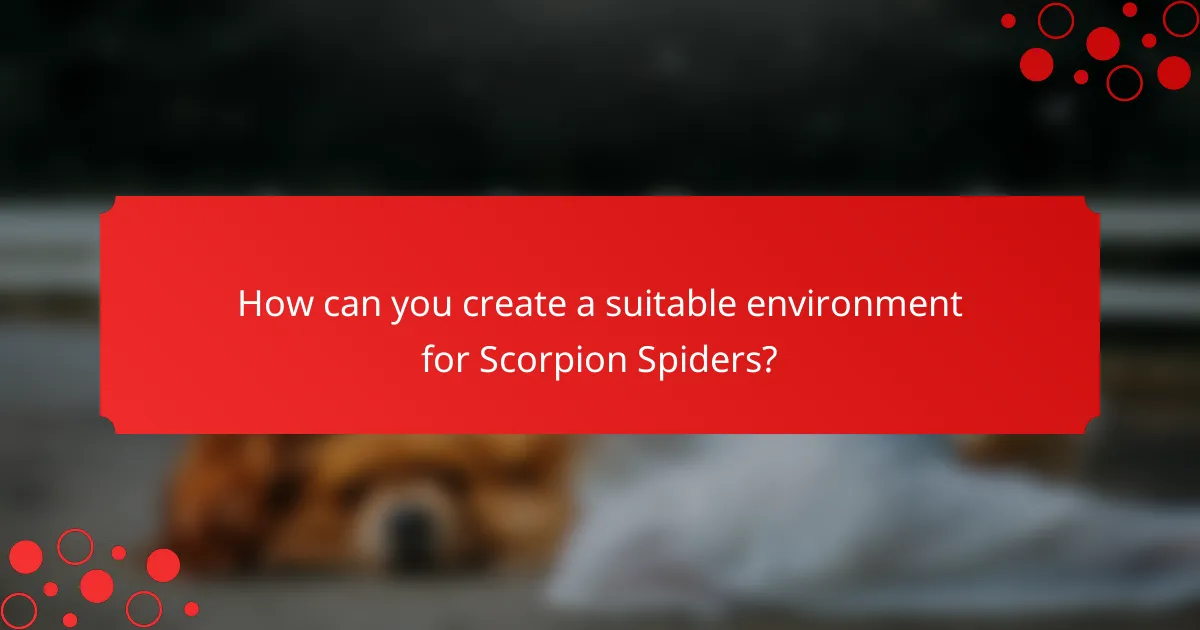
How can you create a suitable environment for Scorpion Spiders?
To create a suitable environment for scorpion spiders, focus on providing the right substrate, maintaining appropriate temperature, and ensuring optimal humidity levels. These factors are crucial for their health and well-being.
Provide appropriate substrate
The substrate for scorpion spiders should mimic their natural habitat, which typically includes sandy or loose soil. A depth of about 5-10 cm is ideal, allowing them to burrow and create a secure environment.
Consider using a mix of sand and peat moss to retain moisture while allowing for proper drainage. Avoid overly compacted materials that can hinder their movement and create stress.
Maintain temperature and humidity
Scorpion spiders thrive in warm environments, with temperatures ranging from 24°C to 30°C (75°F to 86°F). Use a heat mat or lamp to maintain these levels, ensuring there are cooler areas for them to retreat if needed.
Humidity is equally important; aim for levels between 40% and 60%. Regular misting can help achieve this, but be cautious not to over-saturate the substrate, as this can lead to mold growth and health issues.
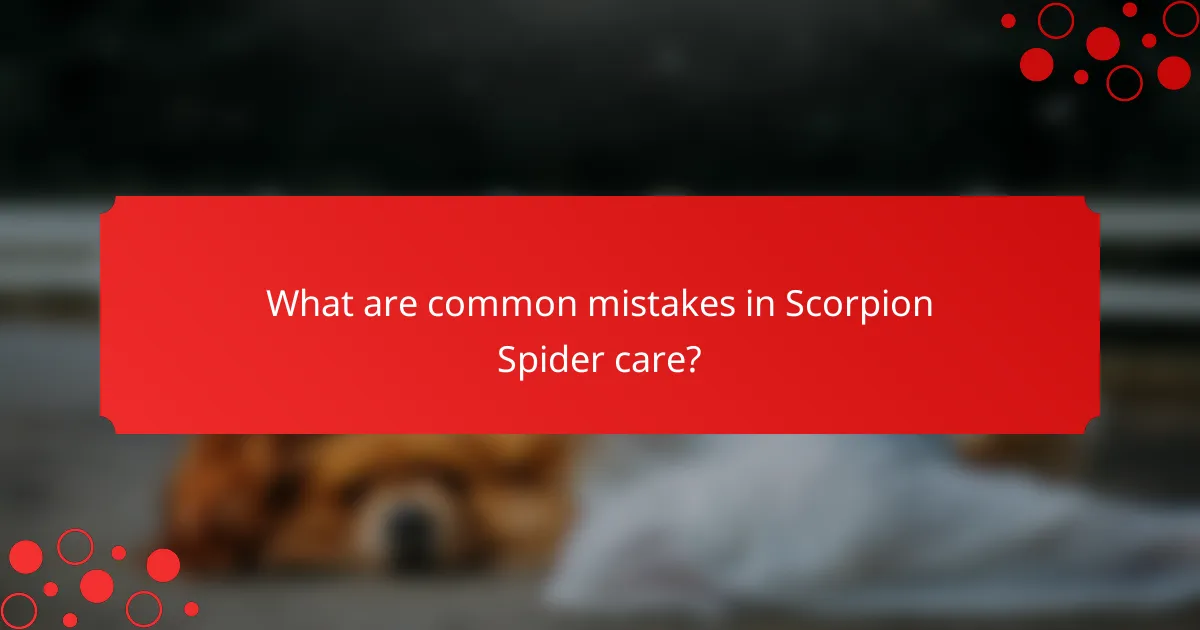
What are common mistakes in Scorpion Spider care?
Common mistakes in Scorpion Spider care include failing to maintain appropriate humidity and temperature levels. These factors are crucial for the spider’s health and well-being, and neglecting them can lead to stress or even death.
Excessive moisture levels
Excessive moisture can create an environment that promotes mold and bacteria growth, which is harmful to Scorpion Spiders. Ideally, humidity levels should be kept between 40% and 60%. Regularly check the substrate for signs of mold and ensure proper ventilation in the enclosure.
To avoid over-hydration, use a hygrometer to monitor humidity levels. If you notice condensation forming inside the enclosure, reduce misting and increase airflow. Providing a dry area within the habitat allows the spider to choose its preferred moisture level.
Improper temperature regulation
Maintaining the correct temperature is essential for Scorpion Spiders, as they thrive in warm environments. The ideal temperature range is typically between 24°C and 30°C (75°F to 86°F). Fluctuations outside this range can lead to stress and health issues.
Use a reliable thermometer to monitor the temperature in the enclosure. If temperatures drop too low, consider using a heat mat or lamp, ensuring it does not create hot spots. Always provide a gradient in temperature so the spider can move to a comfortable area as needed.
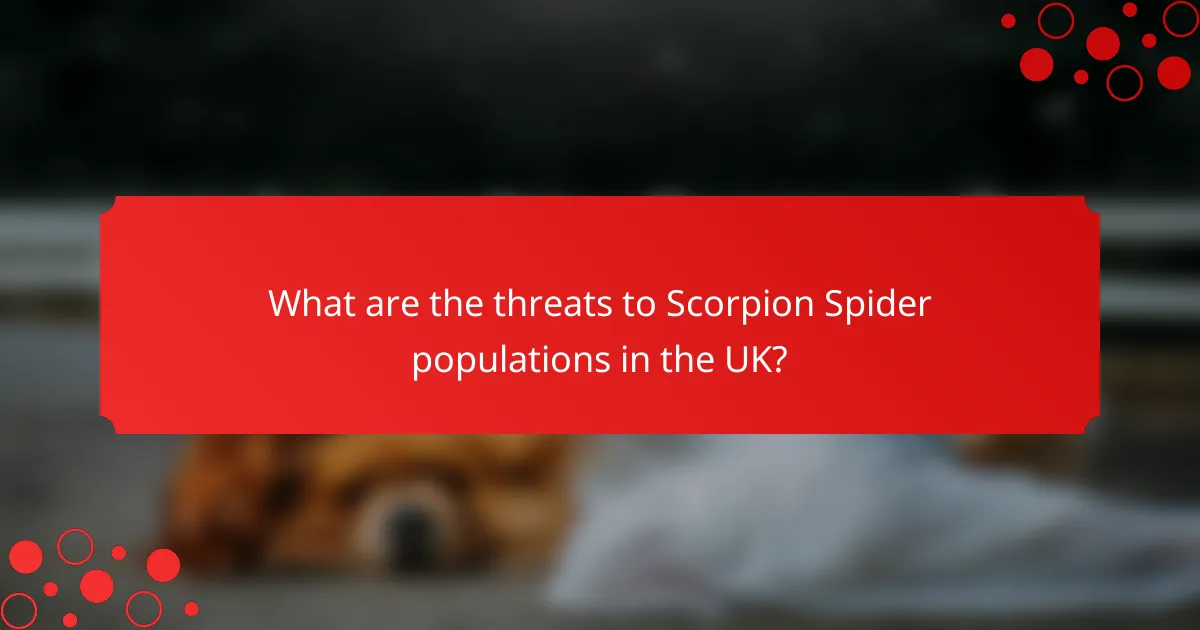
What are the threats to Scorpion Spider populations in the UK?
Scorpion Spider populations in the UK face several significant threats, primarily from habitat destruction, climate change, and pollution. These factors disrupt their natural environments and can lead to declines in their numbers.
Habitat destruction
Habitat destruction is a major threat to Scorpion Spiders, primarily due to urban development, agriculture, and forestry practices. As natural habitats are converted for human use, the availability of suitable environments for these spiders diminishes.
In the UK, areas such as heathlands and grasslands, which are crucial for Scorpion Spiders, are often lost to construction and land management practices. This loss not only reduces their living space but also affects their prey availability, further endangering their populations.
To mitigate habitat destruction, conservation efforts should focus on protecting existing habitats and restoring degraded areas. Engaging in sustainable land-use practices can help preserve the ecosystems that support Scorpion Spiders and other wildlife.
